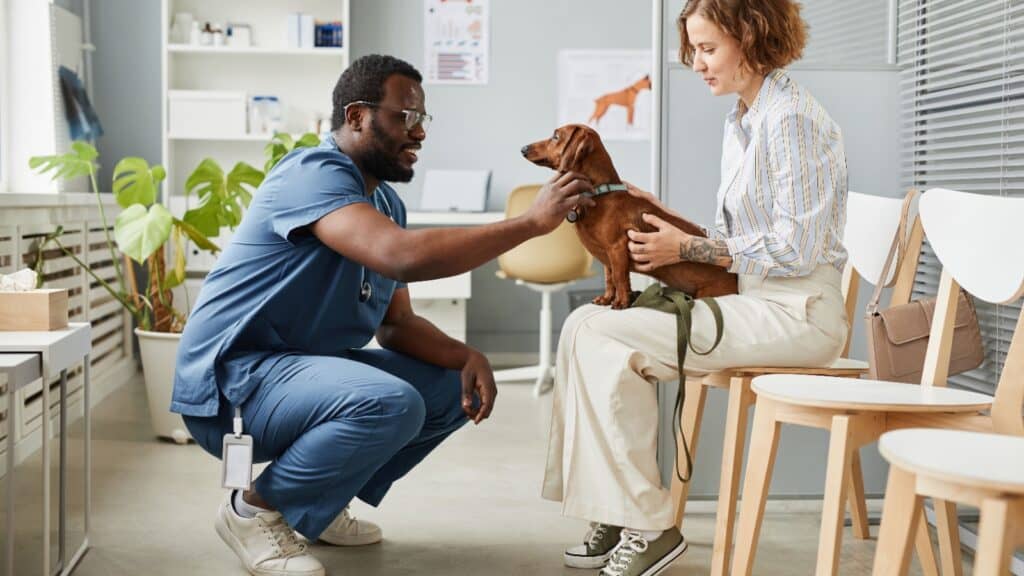How Many Of These Foods Did You Know Could Kill Your Dog?
Our canine companions bring immense joy into our lives, and it’s our duty to ensure their well-being. However, certain everyday foods found in our homes can pose serious risks to their health. Here’s a look at foods that should never be fed to dogs or left within their reach.
To be prepared, have contact details of your local veterinarian, the nearest emergency clinic, and the ASPCA Animal Poison Control Center (888-426-4435) at hand.
Onions & Garlic

Onions and garlic, in any form (raw, cooked, even dehydrated powders), can destroy a dog’s red blood cells, leading to poisoning and potentially fatal anemia. These ingredients should not be included in any food given to your pet if present in significant amounts.
That said, you will find certain products or homemade recipes that contain a very small amount. Use caution and discuss with your vet.
Xylitol

Xylitol, commonly found in sugar-free products (candy, gum, medicines, soda, etc.), can lead to a rapid drop in blood sugar levels and liver failure in dogs. Symptoms may include vomiting, lethargy, and coordination issues. Immediate medical attention is necessary if ingestion occurs.
Chocolate Hazard

Theobromine, present in chocolate, can be toxic to dogs. It can induce vomiting, diarrhea, and even fatal heart problems. All forms of chocolate, particularly dark chocolate and unsweetened baking chocolate should be kept out of their reach.
Avocados

Avocados contain persin, a toxin that can cause vomiting and diarrhea in dogs. Ingesting the avocado pit may result in life-threatening intestinal obstructions. It’s essential to keep avocado flesh and pit away from dogs.
Alcohol

Even small amounts of alcohol can cause severe health issues in dogs, such as vomiting, diarrhea, breathing difficulties, and even coma or death. It’s imperative to ensure that alcoholic beverages are inaccessible to pets.
Salt

Excessive salt consumption can lead to sodium ion poisoning in dogs, resulting in symptoms like vomiting, diarrhea, and seizures. It’s best to avoid feeding dogs snacks with high salt content.
Coffee & Caffeine

Caffeine-containing products like coffee, tea, cocoa, and energy drinks should be kept out of reach of dogs, as they can be fatal if ingested.
Grapes & Raisins

Ingesting grapes or raisins can cause kidney failure in dogs. Symptoms may include vomiting, lethargy, and weakness. Immediate veterinary assistance is necessary if ingestion occurs.
Macadamia Nuts

Even a small quantity of macadamia nuts can induce symptoms like muscle shakes and weakness in dogs, potentially leading to death. It’s crucial to keep all foods containing macadamia nuts out of their reach.
Milk & Dairy Products

Dogs lack the enzyme necessary to digest lactose, making dairy products like milk a potential cause of digestive discomfort. While small amounts may be tolerated, it’s best to avoid feeding them to dogs.
Yeast Dough

Consumption of yeast dough can lead to gastric bloating and potential ethanol intoxication in dogs. It’s essential to ensure that yeast dough is not accessible to pets to prevent such emergencies.
Be Prepared

Accidents can happen despite precautions. Keep emergency contacts easily accessible in case of suspected ingestion of toxic substances. Prompt action can save your dog’s life in such situations. Put this on your fridge: ASPCA Animal Poison Control Center (888-426-4435).
Understanding The Surge In Veterinary Costs: Is It Becoming Too Expensive To Have A Pet?

If you own a pet, we bet you have noticed that veterinary care costs are escalating, leaving many of us with sticker shock and struggling to secure timely appointments. There are reasons for this burgeoning phenomenon; we unveil the many factors steering this surge. Read: Understanding The Surge In Veterinary Costs: Is It Becoming Too Expensive To Have A Pet?
Join Us

Join us on this empowering journey as we explore, celebrate, and elevate “her story.” The Queen Zone is not just a platform; it’s a community where women from all walks of life can come together, share their experiences, and inspire one another. Welcome to a space where the female experience takes center stage. Sign up for our newsletter so you don’t miss a thing, Queen!







